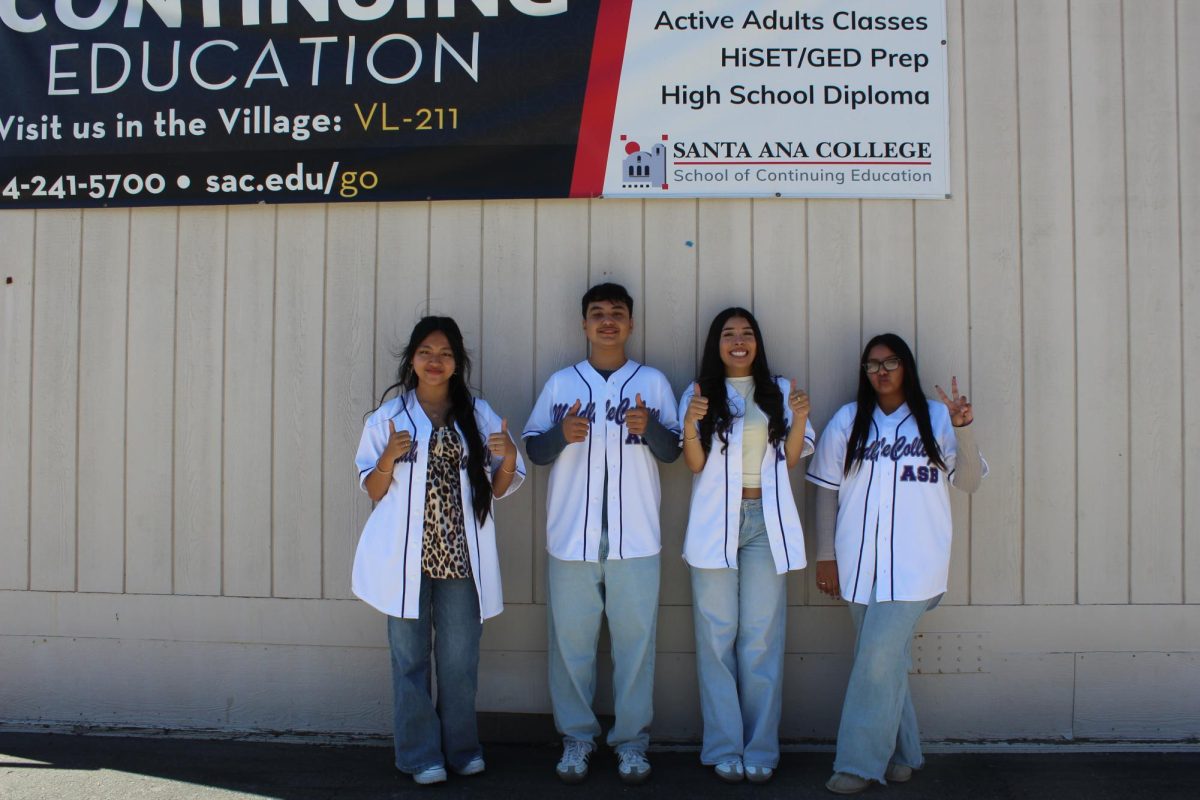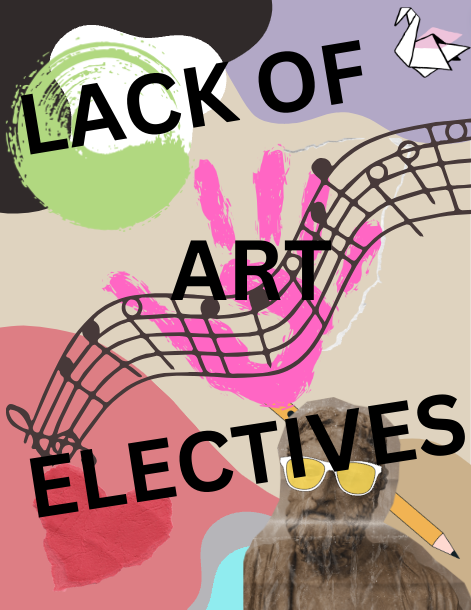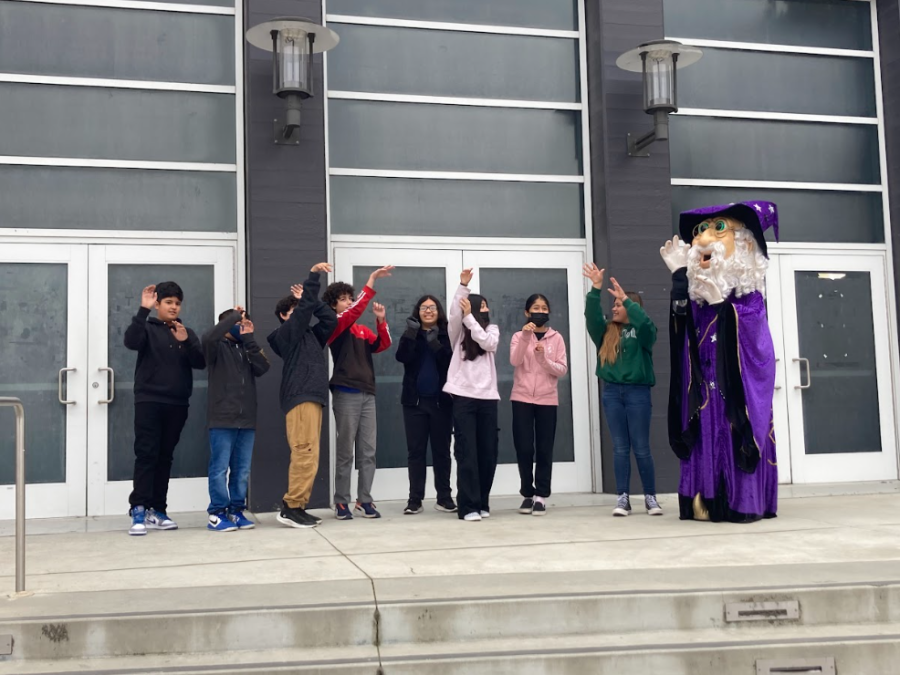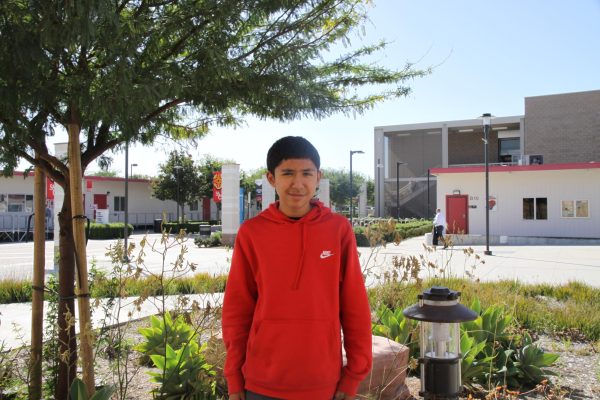The journalism program at MCHS has experienced significant transformation over the years, evolving from a small print newspaper to a digital platform that engages students and the community.
The story of journalism at MCHS begins with the founding of The Spellbinder by history teacher Lucy Guerrero. The revival of the newspaper eventually led to its establishment as a formal class.
Tamara Storms is the current journalism teacher who has taught journalism since 2014 when she first fell in love with the subject.
It just started out as a club but then later, she took students to a summer journalism camp, and one thing led to another and now she has taught journalism for nine years.
“The Spellbinder was not started by me. Before I came to MCHS, Lucy Guerrero started it. When she left, the Spellbinder was inactive until a junior, Alejandra Marin, asked Mrs. Peterson to bring it back as a club,” Storms said.
Storms later shares how she started helping the previous journalism teacher and adviser, but the principal at the time wanted the club to be turned into an actual elective taught at the high school for students.
“I started helping her, and eventually, the principal wanted it to be a class. Mrs. Peterson didn’t want to take it on, so I was asked. Initially, I declined, but after attending a journalism summer camp at Cal State Long Beach in 2014, I fell in love with it and decided to teach it as a class,” Storms said.
The early years saw the use of InDesign for print editions, which proved to be both complicated and costly. In the feedback in Adobe community some users say that one major difficulty was the program’s tendency to slow down significantly when handling large documents or those with complex elements like, GREP styles and hyperlinks. Users found that temporarily disabling GREP styles or hyperlink verification could improve performance. Seeking more efficient methods, Storms reached out to other journalism teachers and transitioned to using SNO Sites in 2016.
“We used InDesign for about two years, which was very complicated and cost about $2,000 to $3,000 a year. Going online was a game changer since it’s based on templates, and we mainly had to focus on writing,” Storms said.
The journalism program has since incorporated new technology, enhancing how journalism is taught and practiced at MCHS. These advancements have not only simplified the workflow, but also kept the curriculum relevant to current journalistic practices.
“We use technology all the time, from research to writing stories, social media, and promoting our news site. This year, we started using FLOW, an online work management software, alongside Spotify and Soundtrap for podcasts,” Storms said.
Interest in the journalism elective has grown steadily.
“Enrollment has grown from one section into two. The most rewarding thing I’ve seen is students going on to college papers and writing for USA Today,” Storms said.
The program’s focus has also shifted towards community coverage, addressing local issues and involving students in real-world journalism.
“The biggest adjustment I’ve made is trying to make the program focus on the Santa Ana community, using young students to cover news deserts like Santa Ana,” Storms said.
Keila Lopez, a Co-Editor-in-Chief of the journalism program, has witnessed and contributed to these changes.
“I’ve been in journalism for two years. It’s expanded significantly. When I started, there were some empty seats in the beginning class, but now we have more classes and more student involvement,” Lopez said.
She highlighted significant milestones in the program’s history. SNO is a big deal in journalism. Best of SNO highlights outstanding student journalism from the SNO Network to acknowledge the hard work and dedication of student journalists. The platform aims to inspire others by showcasing innovative approaches to traditional news topics and providing fresh ideas for aspiring journalists.
“Winning Best of SNO awards and getting FLOW have been significant milestones, showing increased investment and interest in our program,” Lopez said.
Lopez also spoke about balancing traditional practices with modern storytelling methods.
“We still follow AP style for interviews and stories, but we also use modern methods like podcasting on Spotify,” Lopez said.
Collaboration is key in the evolving journalism program.
“Our magazine projects require collaboration using InDesign, and our podcast involves teamwork and coordination,” Lopez said.
The relationship between the journalism program and the MCHS community has grown stronger over time.
“Support has increased across the school, making our program more well-known and encouraging student participation,” Lopez said.
Looking ahead, Storms envisions a journalism program that is deeply involved with community engagement and higher education opportunities.
“The future of our elective is to focus on community coverage and support students aiming to write for top newspapers. We also plan to continue collaborating with SAC, enabling students to take journalism classes and gain valuable experience,” Storms said.
Through continuous adaptation and innovation, the journalism program at MCHS remains a dynamic and part of the school’s educational offerings, preparing students for the evolving landscape of media and communication.







































